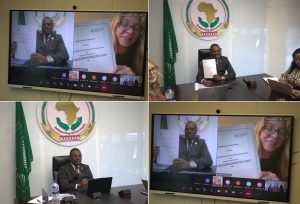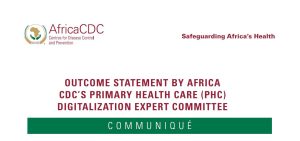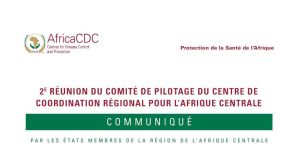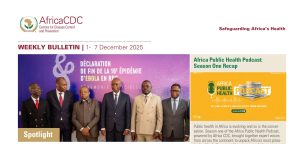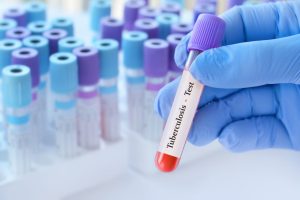In 2014, as the Ebola outbreak swept through Sierra Leone, fear spread even faster than the virus itself. One dangerous rumor claimed that bathing in hot saltwater could prevent Ebola infection. Families, acting on this hearsay, bathed their children in scalding water—some suffering burns—believing they were protecting them from the deadly disease.
The rumor took hold for two main reasons. First, it originated from a trusted religious leader—someone people believed had their best interests at heart. Second, it spread faster than official health messages, filling the gap left by slow and fragmented communication.
This example captured the attention of public health experts, communication specialists, and behavioral scientists gathered on the island of Djerba in southern Tunisia last month. The group had come together for a specialized training on Infodemic Management, organized by the Tunisian Ministry of Health and funded by the European Centre for Disease Prevention and Control (ECDC), with Africa CDC representatives in attendance. The goal: to enhance understanding and operationalization of infodemic management during health emergencies.
“During the Ebola outbreak in Liberia, we saw how deeply misinformation could embed itself in communities. Misinformation was more than just noise—it shaped behaviors and cost lives,” said Dr. Maike Winters, an expert from the European Centre for Disease Prevention and Control (ECDC).
A similar pattern continues to emerge across emergencies in Africa. From COVID-19 vaccine hesitancy to false cures for Ebola, cholera, or malaria, African public health responders have repeatedly witnessed how misinformation, disinformation, fear-based messaging, and distrust can undermine even the most robust emergency responses.
“We’ve seen time and time again that misinformation is not just a communication failure—it is an operational threat. An outbreak response that ignores the information ecosystem is destined to struggle,” said Thanas Goga, a specialist in Risk Communication, Community Engagement, and Infodemic Management (RCCE-IM) at the WHO Health Emergencies Balkan Hub.
That’s why social listening—the active monitoring and analysis of what communities are saying, asking, and sharing—is becoming as critical to emergency response as contact tracing or lab testing.
“If we don’t track what people believe, we cannot change behaviors. Data alone is not enough; we must understand how information spreads,” said Stefan Mandić Rajčević, Director of Digital Learning and Innovation at the University of Belgrade, Serbia.
As Africa CDC continues to strengthen preparedness and response mechanisms across the continent, integrating infodemic management into epidemic response plans is no longer optional. The COVID-19 pandemic exposed the power of misinformation to undermine health responses and fuel vaccine hesitancy. Managing outbreaks today requires not only robust epidemiological surveillance but also active monitoring and management of the information space.
“The truth is, we cannot separate public health from public perception. If people don’t trust the messenger, they won’t trust the message. That’s why we need to build relationships before the next crisis,” said Cesare Buquicchio, Scientific Director at CRESP – Emergency Risk Communication for Public Health, University of Pisa. He explained why epidemic and infodemic management must go hand in hand.
Participants reached a consensus: epidemics and infodemics are two sides of the same coin, requiring synchronized strategies that merge public health interventions with targeted communication campaigns.
“A successful response requires behavioral scientists, journalists, religious leaders, and public health officials working together,” noted Rajčević.
“We need to track misinformation before it takes root—not just react after it spreads. Prebunking is just as important as debunking. We must get ahead of misinformation before it goes viral,” said Dr. Winters.
“Epidemic response is dynamic. What works today may not work tomorrow. We must remain agile,” Buquicchio added.
Mandić led the creation of an Infodemic Management Hub—a first-of-its-kind initiative supported by WHO. The hub doesn’t just track disease outbreaks; it listens to the noise around them, blending epidemiological data with social listening insights to map what people are hearing, fearing, and believing, said Rajčević.
“Infodemic management isn’t a job for a lone wolf with a Wi-Fi connection,” he added. “It takes fact-checkers, journalists, behavioral scientists, and community leaders working together. And because a rumor in Nairobi won’t land the same way in Bamako, cultural context is everything.”
The training focused on tools and tactics—but more importantly, it dug deep into the messy human side of misinformation, where psychology, fear, and social pressures collide. “People don’t just believe misinformation because they’re uninformed. They believe it because it makes sense within their worldview. When a trusted religious leader in Sierra Leone said saltwater baths could prevent Ebola, people listened. It wasn’t ignorance—it was trust. And that’s why we must work with community leaders, not against them,” said Dr. Maike.


